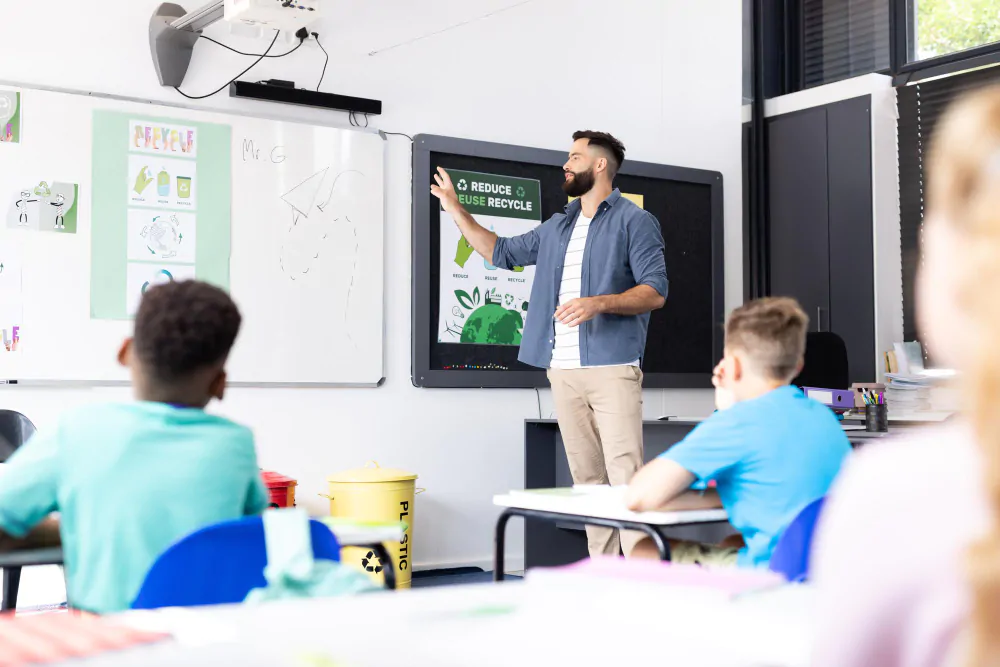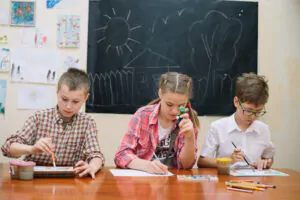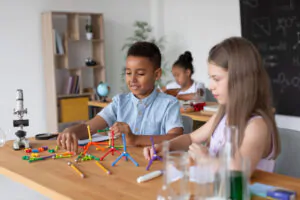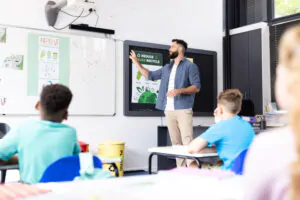The evolution of education has taken a significant leap in recent years, and digital classrooms are at the heart of this transformation. The traditional blackboard-and-chalk system is giving way to technology-driven, interactive, and engaging learning environments. At R P Vasani Foundation, particularly through R.P. Vasani International School, digital classrooms are integrated across grades from nursery to Grade 12 to make learning more interactive, personalized, and effective.
Understanding Digital Classrooms
Digital classrooms are education spaces equipped with technology that enables teachers to deliver content through digital tools such as projectors, smartboards, tablets, and computers. They allow real-time collaboration, multimedia learning, and access to online resources. The implementation of digital classrooms at R P Vasani International School provides students with a modern approach to learning where education is no longer confined to textbooks alone.
Key features include:
- Interactive smartboards
- Tablets and digital learning devices
- Multimedia presentations and video content
- Online assessments and quizzes
- Virtual experiments in science labs
Early Adoption: Digital Classrooms from Nursery
At R P Vasani International School, digital classrooms are introduced even in nursery and pre-primary stages. Young learners interact with colors, shapes, sounds, and basic problem-solving activities through interactive digital tools. Early exposure to digital classrooms encourages curiosity, creativity, and cognitive development. Teachers use multimedia lessons, animated storytelling, and interactive games to stimulate young minds.
Benefits of using digital classrooms at this stage include:
- Enhanced engagement in lessons
- Development of digital literacy from an early age
- Encouragement of active participation in learning activities
Primary Grades: Building Strong Foundations
From Grade 1 to Grade 5, digital classrooms play a vital role in reinforcing foundational skills in mathematics, language, and science. At R P Vasani International School, students learn through interactive simulations, digital experiments, and educational videos. This technology-driven approach makes abstract concepts easier to understand and retain. Digital tools also help teachers track student progress and customize lessons for individual needs.
Middle School: Promoting Collaboration and Critical Thinking
In Grades 6 to 8, digital classrooms enable collaborative projects and group learning. Students at R P Vasani Foundation use digital platforms to conduct research, present findings, and work on problem-solving exercises. These classrooms encourage critical thinking and creativity. Teachers leverage digital classrooms to assign virtual experiments, create interactive history timelines, and simulate real-world scenarios.
Benefits include:
- Better engagement in STEM subjects
- Collaborative learning through digital tools
- Improved analytical and problem-solving skills
Secondary and Higher Secondary: Preparing for the Future
In Grades 9 to 12, digital classrooms at R P Vasani International School play a crucial role in preparing students for board examinations and competitive assessments. Science experiments, mathematics concepts, and computer programming are all taught with interactive modules. Students have access to online libraries, e-learning platforms, and virtual labs. Digital classrooms provide flexibility for self-paced learning and review, making education personalized and effective. Teachers can also integrate multimedia presentations, virtual simulations, and interactive assessments to boost understanding. This approach not only enhances academic performance but also develops 21st-century skills such as technological literacy, digital collaboration, and innovative thinking.
Advantages of Digital Classrooms in Modern Education
Digital classrooms bring multiple advantages to students and educators alike:
- Interactive Learning: Lessons are more engaging and memorable.
- Real-Time Feedback: Teachers can track student progress instantly.
- Resource Accessibility: Students access a wealth of online educational materials.
- Collaboration: Encourages teamwork through virtual group projects.
- Preparation for Modern Careers: Students develop skills relevant to the digital world.
Technology Integration at R.P. Vasani International School
The school has invested heavily in digital classrooms:
- Smartboards in every classroom for interactive lessons
- Computers and tablets for research and projects
- Online assessment tools to monitor performance
- Virtual Science Labs for experiments
- Language labs for enhanced communication skills
This robust infrastructure allows students to explore, learn, and apply knowledge efficiently.
Teacher Role in Digital Classrooms
Teachers at R P Vasani International School act as facilitators rather than just content deliverers. In digital classrooms, they guide students through interactive lessons, moderate discussions, and provide personalized support. Teacher-student interaction is more dynamic, fostering a culture of curiosity and problem-solving.
Why Choose Us
At R P Vasani Foundation, the adoption of digital classrooms is more than just technology; it is a philosophy to make learning engaging, effective, and future ready. Teachers are trained to use the latest tools, curriculum is adapted to modern needs, and students develop critical 21st-century skills. From nursery to Grade 12, the school focuses on holistic development with advanced digital facilities, strong academics, and co-curricular activities. Choosing R P Vasani Foundation means investing in your child’s growth, academic excellence, and digital literacy, preparing them for a fast-evolving world.
Conclusion
Digital classrooms at R P Vasani Foundation represent the future of education. From nursery to Grade 12, students experience interactive, technology-driven learning that strengthens academic concepts, enhances problem-solving abilities, and builds critical 21st-century skills. The combination of smart infrastructure, trained teachers, virtual labs, and online resources ensures holistic development. Students are prepared to thrive in a technology-driven world while enjoying an engaging and collaborative learning experience. Choosing R P Vasani International School means choosing education that is modern, effective, and empowering.
FAQs on Digital Classrooms at R.P. Vasani International School
What are digital classrooms?
Digital classrooms use technology like smartboards, tablets, and projectors for interactive learning.
At what grade are digital classrooms introduced at RPVIS?
From nursery onward, ensuring early exposure to technology.
Do digital classrooms improve student engagement?
Yes, interactive lessons and multimedia content increase interest and understanding.
What tools are used in digital classrooms at RPVIS?
Smartboards, tablets, online quizzes, virtual labs, and language labs.
Can students access digital resources from home?
Yes, online resources and e-learning platforms provide continuity in learning.
Do teachers receive training for digital classrooms?
Absolutely, teachers undergo regular training to use the latest technology effectively.
Are digital classrooms helpful for board exam preparation?
Yes, virtual labs, interactive lessons, and online assessments aid in better preparation.
Do digital classrooms support collaboration?
Yes, group projects and virtual teamwork are encouraged.
How do digital classrooms improve learning in science and math?
Concepts are visualized with simulations, interactive models, and practical experiments.
Does R.P. Vasani International School integrate digital classrooms across all grades?
Yes, from nursery to Grade 12, creating a consistent and engaging learning environment.
For more information about The Role of Digital Classrooms in Modern Education or related blogs, call us at +91 9898117767 or email info@rpvis.org.








